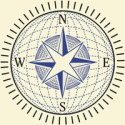The Author
Ankit Panda is a Senior Fellow at the Carnegie Endowment for International Peace. He tweets at @nktpnd.
In this article:
The micro-column
The global nuclear order isn’t what it used to be — and not just because of Russia’s nuclear threats in the course of its invasion of Ukraine. North Korea, once derided as a “fourth-rate pipsqueak” by U.S. President Richard Nixon and treated as a nonproliferation problem, is now a de facto nuclear power. Under Chinese leader Xi Jinping, in the last few years, Beijing has started to pursue a major quantitative nuclear build-up.
In the decades following the end of the Cold War, global nuclear weapons stockpiles declined substantially, owing largely to reductions by the United States and Russia, who together possess the vast majority of the world’s nuclear weapons.
This trend may reverse in the 2020s, and not just because of China. Competition is intensifying between major powers and U.S.-Russia arms limits could plausibly cease to apply after the 2010 Strategic Arms Reduction Treaty expires in 2026.
Add to this dangerous nuclear cocktail a raft of new technologies that could prove destabilizing — including artificial intelligence, hypersonic weapons, and novel cyber threats — and a clear conclusion emerges: We’re standing at the doorstep of a new nuclear age.

More Semafor
Watch our latest video: When COVID doesn’t end, animated with AI.


